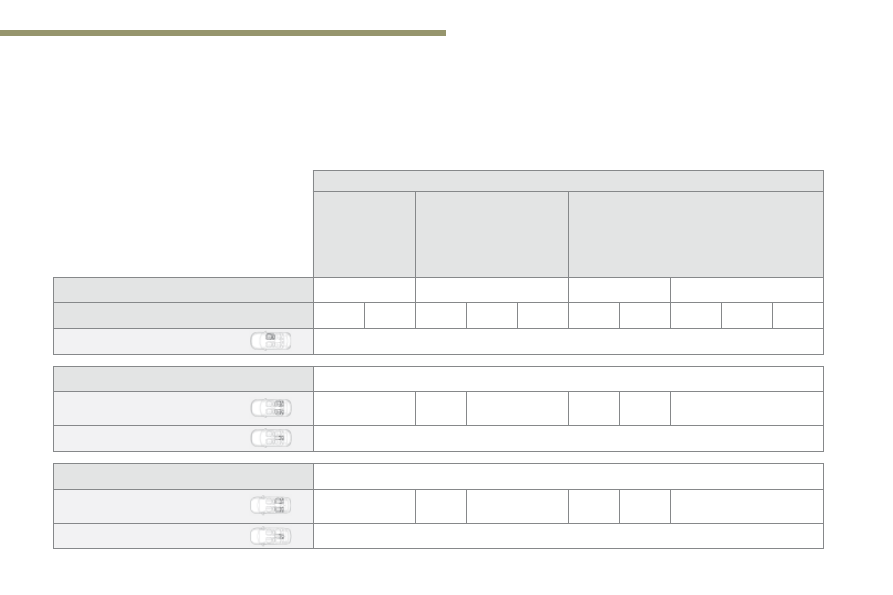Peugeot 308 (2017 year). Instruction - part 10

143
5
Safety
308_en_Chap05_securite_ed01-2016
Locations for ISOFIX child seats
In accordance with european legislation, this table indicates the options for installing ISOFIX child seats on seats in the vehicle fitted with ISOFIX
mountings.
In the case of universal and semi-universal ISOFIX child seats, the ISOFIX size category, determined by a letter from A to G, is indicated on the child
seat next to the ISOFIX logo.
Weight of the child / indicative age
Less than 10 kg
(group 0)
up to approx.
6 months
Less than 10 kg
(group 0)
Less than 13 kg
(group 0+)
up to approx. 1 year
From 9 to 18 kg (group 1)
From approx. 1 to 3 years
Type of ISOFIX child seat
Cot
rearward facing
rearward facing
forward facing
ISOFIX size category
F
G
C
D
E
C
D
A
B
B1
Front passenger seat
Not ISOFIX
Hatchback
Outer rear seats
IL-SU
(a+b)
IL-SU
(c)
IL-SU
(a)
IL-SU
(c)
IL-SU
(a)
IUF
IL-SU
Centre rear seat
Not ISOFIX
SW
Outer rear seats
IL-SU
(a+b)
IL-SU
(c)
IL-SU
(a)
IL-SU
(c)
IL-SU
(a)
IUF
IL-SU
Centre rear seat
Not ISOFIX